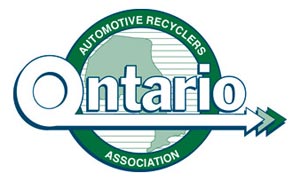Neil James had seen the writing on the wall in California.nnIn 1989, the then-president of Ralph’s Auto Supply was approached at one of the Ralph’s locations on Mitchell Island by an official with Richmond City Hall. The official suggested that the business could practice better waste management procedures, but when James asked what procedures he should follow, the official had none to recommend.nnBy then, however, auto parts recyclers in California had been hit by lawsuits from both government and environmental organizations.nn“I realized we’d have to do something here in B.C., or face the same kinds of problems,” James said.nnIn 1993, James led the charge in asking the government for stricter regulations.nn“No other industry had ever done that,” he said. “And in 1995 we were the first of any automotive industry in all of North America to proactively develop an Environmental Code of Practice.”nnThanks in part to James initial efforts — followed by the support of the BC Automotive Recyclers, and Environment Canada — in 2007, the provincial government enacted a regulation for the auto recycling industry that specified best practices to dispose of hazardous waste.nn“It’s the one area of auto recycling where B.C. has set the standard,” James said.nnOther programs to ensure that vehicles reach their maximum recycling and safety potential, with a minimum of environmental impact, have followed.nnThe B.C. Scrap-It Program tries to get older cars off the road entirely by providing incentives to British Columbians to replace higher polluting, i.e. older, vehicles with cleaner forms of transportation.nnAccording to an AirCare Research Centre study, vehicle models 2000 and older emit up to 60 times more smog-forming emissions than 2008 and later models. Replacing a 1990 sedan with a 2009 hybrid can result in a reduction of up to 67 per cent in greenhouse gas emissions.nnBegun in 1996, the Scrap-It program was based on a similar program in California, but with more partners and incentives.nnThese include car-to-car (the most popular), car-to-TransLink (a special three-zone pass for a year), and car-to-cash. Moto and Car2Go are also partners.nnSince it began, the program has welcomed 37,000 vehicles to the scrap heap — over 32,000 of those since 2008, when the program’s incentives became higher thanks to a $15 million infusion from the B.C. government.nnThe vehicles go through a processing facility where all the fluids are removed, as well as the batteries and tires. The aluminum, copper and steel are salvaged before the vehicle is crushed.nnUnder the program, the sale of parts from the vehicles is disallowed.nn“Scrap-It was originally designed as an air-management quality program, not a junker program,” said Dennis Rogoza, CEO of the BC Scrap-It Program Society.nn“If we allowed parts to be sold then this just serves to create a supply chain of parts that are used to keep older, high polluting vehicles on the road longer. This is contrary to our program objectives — to help our customers to move to a cleaner form of transportation.”nnB-CAR (the BC Auto Recyclers Division of the Automotive Retailers Association) has developed its own recycling program. The SecondLife Vehicle Retirement Program (ara.bc.ca/secondlife) encourages the recycling of parts by retiring vehicles with a B-CAR member, which then re-sells the parts.nn“Even though a vehicle may have outlived its usefulness to the owner, the parts from that vehicle may still be reused and can extend the life of another vehicle,” said Ken Hendricks, industry relations adviser for the Automotive Retailers Association. “The purpose of the program is reminding people that first we must reduce our consumption of products, then reuse and extend the life of the product, and then we can recycle.”nnPotential benefits from reselling and recycling parts include extending their impact over a longer period of time, cutting down on use of resources needed to make the parts, and eliminating the number of materials that would normally be left in landfills, thus reducing contamination. And savings to the consumer can be significant.nn“Many people live in the past and do not realize the cost of new OEM (original equipment manufacturer) parts,” said Jim LeBrun, of Comox Valley Auto+Metals Recyclers in Courtenay, and Vice Chairman of B-CAR.nnWith advances in technology come an increase in costs for parts, many of which are more sophisticated than similar parts found on vehicles in the past. For instance, a driver’s-side-view mirror, one that is heated and painted with a signal light, might cost $1,800. That’s a far cry from the cost of a side-view-mirror even ten years ago.nnThe demand for recycled parts is also great, LeBrun says.nn“In the last few years there has been a shortage of parts for different makes of cars. This is not just for the older cars but for late models and even one- or two-year-old models.”nnFrom the Vancouver Sun.
